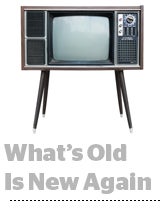 Ecommerce and direct-to-consumer (DTC) brands are flooding into television, and bring a new data-driven perspective to the old media channel.
Ecommerce and direct-to-consumer (DTC) brands are flooding into television, and bring a new data-driven perspective to the old media channel.
While legacy brands have pre-existing preferences for specific programs or media channels and for gross ratings points (GRPs), DTC startups are uniquely suited to bring digital tactics to TV advertising.
“The result for legacy brands is that there isn’t a strong push or reason to heavily optimize ads,” said Mark Hudson, head of business intelligence at the TV ad analytics firm TVSquared.
Yet, TV is still a new medium for many digital natives, and getting into the old channel has created new insights into their funnel strategies, brand exposure and target audience. Here are three things DTCs have learned from focusing on the glass.
Connecting TV to the sales funnel
Touch of Modern, an ecommerce marketplace, analyzes its site and app traffic within eight minutes of a commercial airing, said CEO Jerry Hum.
The company runs TV campaigns for at least two weeks, Hum said, to gain enough data to optimize around and potentially convert traffic.
Ingenio, which operates pay-per-call and ecommerce services, has been testing different channels and dayparts on one- or two-week intervals since it first started airing TV commercials last September, said Rayanne Piaña, the brand’s director of marketing.
That lets Ingenio move first-time site visitors, who arrive because of its commercials, down the funnel to either set up an account or purchase, Piaña said.
Ingenio also surveys its customers about what networks or shows they watch, to see where its target audience over-indexes on television, she said.
DTC companies’ ability to connect sales lift or engagement metrics like site traffic and app downloads to TV campaigns is powering a new round of interest in multitouch attribution, said Sean Cunningham, president and CEO of the VAB, an industry trade group.
TV exposes brands to more customers
While many DTC brands prospect on social media, TV reshapes how they think about their target audience.
When Touch of Modern started running TV commercials last year, Hum said the company was surprised to discover that much of its new traffic wasn’t from young, urban men, the audience it laser-focused on online.
DTC brands with narrow online targeting often find out their marketing can work outside of a specific demographic, TVSquared’s Hudson said. One of TVSquared’s startup men’s fashion customers, for instance, saw that TV commercials were driving conversions from women, who were buying clothes for family members or as a gift.
“If you restrict your marketing to specific audiences and online targeting parameters, then you’re going to miss a large piece of your consumer base,” he said.
TV prospects can have more value than social media prospects
While search and social media create deterministic connections when a logged-in user clicks on an ad, TV campaigns can only be judged probabilistically, since marketers can’t directly connect incoming traffic to the commercial, Hum said.
Despite the greater value of deterministic audiences however, he said TV campaigns drive higher-value customers with higher lifetime value.
Touch of Modern is analyzing why TV audiences purchase at higher rates. One hypothesis is that commercials lead to mobile sign-ins, since TV watchers turn to their phone during commercials, and mobile traffic is more valuable than web traffic. Older audiences also tend to have higher incomes, and since TV viewers tend to be older than social users, those campaigns are bringing deeper-pocketed shoppers.
There’s also a “higher barrier to entry” with TV campaigns, he said. Someone on Facebook can accidentally click a link or like a social post. A TV viewer who sees a commercial and takes the next step of visiting or searching for the site is showing stronger intent.
DTC brands can bring their data-driven perspective to TV, but they can also measure themselves to death if they ignore opportunities that defy direct quantitative attribution, Cunningham said.
Ingenio sees “something special about TV” that doesn’t come from other media channels, Piaña said.
She said she expects TV’s halo effect on marketing is related to its reach and distinct brand voice compared to a mobile video spot. “But it’s an area where we’re looking for ways to measure that are outside of our normal metrics.”














